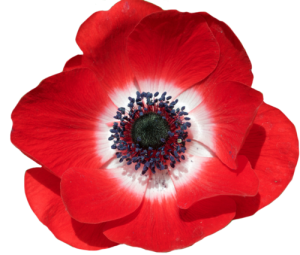Personal Details
George Elliott Austin, born on the 17 November 1892 and baptised on 4 December 1892 in Whitchurch, Shropshire youngest son of William and Kate Austin. Educated at Royal Masonic School, Bushey 1901-1910 and played hockey for Hertfordshire. He worked for Alliance Assurance Co.,Birmingham and resided at 1 Oliver Road, Birmingham.
George enlisted as Private in the Territorials before 1914 and entered France in March 1915. He was promoted to Sergeant and then obtained a commission and was killed in action by a machine gun bullet while leading C Company in an attack.
Military Details
Regiment : 6th Battalion, Royal Warwickshire Regiment
Rank : 2nd Lieutenant
Service Number : 1799 (prior to being commissioned)
Killed in Action; Belgium 27 August 1917 Aged 24
George was awarded the Campaign Medals (1914/15 Star, British War Medal and Allied Victory Medal)

The 1914 Star (also known as 'Pip') was authorised under Special Army Order no. 350 in November 1917 and by an Admiralty Fleet Order in 1918, for award to officers and men of the British and Indian Expeditionary Forces who served in France or Belgium between 5 August and midnight of 22–23 November 1914. The former date is the day after Britain's declaration of war against the Central Powers, and the closing date marks the end of the First Battle of Ypres.
The 1914–15 Star (also known as 'Pip') was instituted in December 1918 and was awarded to officers and men of British and Imperial forces who served against the Central European Powers in any theatre of the Great War between 5 August 1914 and 31 December 1915. The period of eligibility was prior to the introduction of the Military Service Act 1916, which instituted conscription in Britain.
The British War Medal (also known as 'Squeak') was a silver or bronze medal awarded to officers and men of the British and Imperial Forces who either entered a theatre of war or entered service overseas between 5th August 1914 and 11th November 1918 inclusive. This was later extended to services in Russia, Siberia and some other areas in 1919 and 1920. Approximately 6.5 million British War Medals were issued. Approximately 6.4 million of these were the silver versions of this medal. Around 110,000 of a bronze version were issued mainly to Chinese, Maltese and Indian Labour Corps. The front (obv or obverse) of the medal depicts the head of George V. The recipient's service number, rank, name and unit was impressed on the rim.
The Allied Victory Medal (also known as 'Wilfred') was issued by each of the allies. It was decided that each of the allies should each issue their own bronze victory medal with a similar design, similar equivalent wording and identical ribbon. The British medal was designed by W. McMillan. The front depicts a winged classical figure representing victory. Approximately 5.7 million victory medals were issued. Interestingly, eligibility for this medal was more restrictive and not everyone who received the British War Medal ('Squeak') also received the Victory Medal ('Wilfred'). However, in general, all recipients of 'Wilfred' also received 'Squeak' and all recipients of The 1914 Star or The 1914/1915 Star (also known as 'Pip') also received both 'Squeak' and 'Wilfred'. The recipient's service number, rank, name and unit was impressed on the rim.
Further Information
Report in the Birmingham Daily Post 6th September 1917 regarding the death of George Austin
“Second Lieutenant George Elliott Austin, Royal Warwickshire Regiment, killed in action, was the youngest son of the late Mr. William Austin, Whitchurch, Salop, and 24 years of age. Educated at the Royal Masonic School, Bushey, he was employed by the Alliance Assurance Company at their Colmore Row branch, and resided at Oliver Road, Edgbaston. The year before the war he joined the Territorials, and consequently had been on service since August 1914. He went to France early in 1915, and subsequently obtained a commission. Some time age he was invalided home, and he only returned to his battalion in July”
Birmingham Daily Post 6th September 1917
If you can provide any further information on George Austin please get in touch by leaving a comment below, using our Contact Form or by calling in to Whitchurch Heritage Centre.
Information provided by Terry Evanson Whitchurch, Shropshire and Whitchurch Museum and Archives


